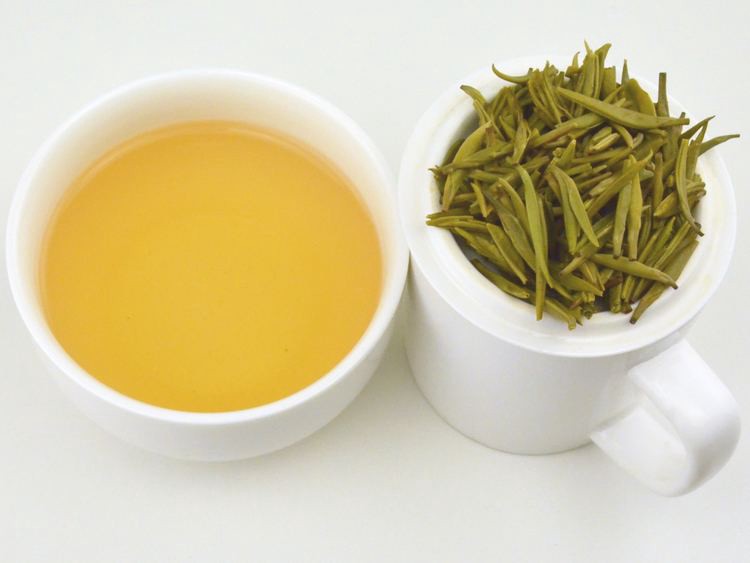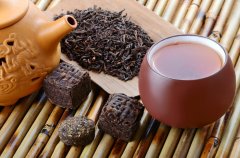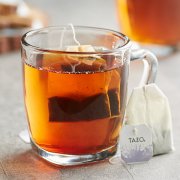Is yellow tea cool or hot? why is it not popular? Where is yellow tea produced and its characteristics are introduced
Yellow tea-it can be said that Western tea lovers recently "discovered" a way of making tea, although it was well known in China as early as the Tang Dynasty (AD 617-907).
Yellow tea is sometimes regarded as a variety of green tea, but it is indeed a unique kind of tea. There are two kinds of yellow tea: live leaf version and bud version, but bud tea is the most precious.
Since we visited a small tea factory specializing in yellow tea, tea guests have been full of enthusiasm for yellow tea. It was in the mid-2000s, near Mengding Mountain in Sichuan Province, and we have been fascinated by it ever since. We suggest that everyone who loves tea should try yellow tea when he has a chance.
We don't have many sources of yellow tea because it is still relatively unknown in our market, so if it is interesting, you must order it in the spring, when it becomes available for the first time, because it is sold out quickly.

Yellow tea processing, the back leaves experienced the initial launch of this early spring one core off or one core two leaves (bud-and-two-leaves).
In the process of making tea, take the heated and softened tea leaves out of the tea pot, cover them with a piece of cloth, and let them "rest" for a few hours or even a day.
According to the decision of the tea maker, this suffocation step may be repeated several times in a few days. At this step (which is not part of the production of green tea), the softened leaves reabsorb their aroma. The result of this step will be extra sweetness in the taste of the finished tea later.
This auxiliary processing step is expensive, so it is usually reserved for selected early spring picking and is currently produced in only a few professional tea-making areas.
The nickname "Snow Bud" refers to the final snowfall before the first harvest bud is picked in most years, and the taste buds usually choose these buds to appear although it is still a dusty snow on the branch. Sure enough, one morning in Mengding Mountain, we needed to wear ice claws because the steep path leading to the tea garden where we were going was snowing too hard and too cold.
Important Notice :
前街咖啡 FrontStreet Coffee has moved to new addredd:
FrontStreet Coffee Address: 315,Donghua East Road,GuangZhou
Tel:020 38364473
- Prev

The difference between Tuo tea and Pu'er tea is Tuo tea raw tea or cooked tea? Who is not suitable for drinking Tuocha?
Tuo tea is compressed in the shape of a bowl, mainly produced in Yunnan and some cities in Chongqing. It is made of black tea, usually Pu'er tea. Yunnan Tuo Tea, also known as Pu'er Tuo Tea, was founded in 1917. Chongqing Tuocha was founded in 1953. Yunnan Tuo tea is more famous than Chongqing Tuo tea, so Tuo tea generally refers to Yunnan Tuo tea or Pu'er tuo tea. The history of Tuo tea has a history of production.
- Next

Tea was chosen as one of the healthiest and most popular drinks. What are the three most famous teas in the world?
Today, we will turn our attention to the vast camellia world and beyond, a week-long in-depth understanding of tea. Tea! This is the key to longevity! Especially green tea. In a recent article in the New York Post, Dr. Jason Fung and James DiNicolantonio, authors of Longevity Solutions, argue that red wine, high-salt snacks and green tea are the secrets of longevity. For
Related
- Beginners will see the "Coffee pull flower" guide!
- What is the difference between ice blog purified milk and ordinary milk coffee?
- Why is the Philippines the largest producer of crops in Liberia?
- For coffee extraction, should the fine powder be retained?
- How does extracted espresso fill pressed powder? How much strength does it take to press the powder?
- How to make jasmine cold extract coffee? Is the jasmine + latte good?
- Will this little toy really make the coffee taste better? How does Lily Drip affect coffee extraction?
- Will the action of slapping the filter cup also affect coffee extraction?
- What's the difference between powder-to-water ratio and powder-to-liquid ratio?
- What is the Ethiopian local species? What does it have to do with Heirloom native species?

